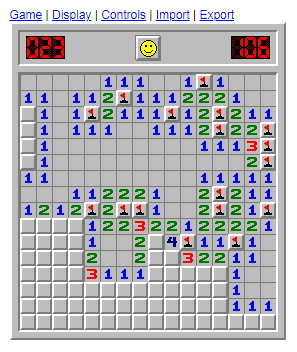
Anyone and everyone whose introduction to the Windows Operating System were the very early versions — like those even before Windows 95 — should know or remember Minesweeper (see image above). Many introduced to the Operating System much later may also remember it because it was part of the package for some time.
I do also because I loved playing it. I love logic games, which was part of the reason for my love of the game.
The object of the game is to identify all the mines under the squares. In the above example, 23 mines are hidden under the 16 x 15 little square grids.
It is a useful game for Science students too because it teaches them about deductive reasoning. While at times you can guess whether a square has a mine underneath, solving it demands logical reasoning.
Minesweeper is also one of the games I make my Problem Solving students play, analyze, and answer questions about. Here’s the first question: How many different 30 x 30 grid of minesweeper games containing 99 mines can the computer create?
Of course, there are a number of different ways of analyzing and attacking this problem. If you want some help with ONE particular way to begin tackling it, have read of Modelling…Without the Catwalk where I describe how to tackle a similar problem about another logic game: the board game Mastermind.
Many of the potential games or setups will be mirror images of one another. Here’s the first extension to the problem above: How many will have mirror image setups?
And finally, many of the games will have set-ups that are rotationally equivalent. Here is the second extension to the problem: How many have one or more rotationally equivalent setups?
Enjoy!
(Incidentally, this is the fourth problem in the series of blog posts about challenging problems. Click here for the first one, here for the second one, and here for the third one. Click here for a description of the reason behind these series and what modeling means.)

